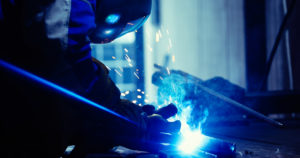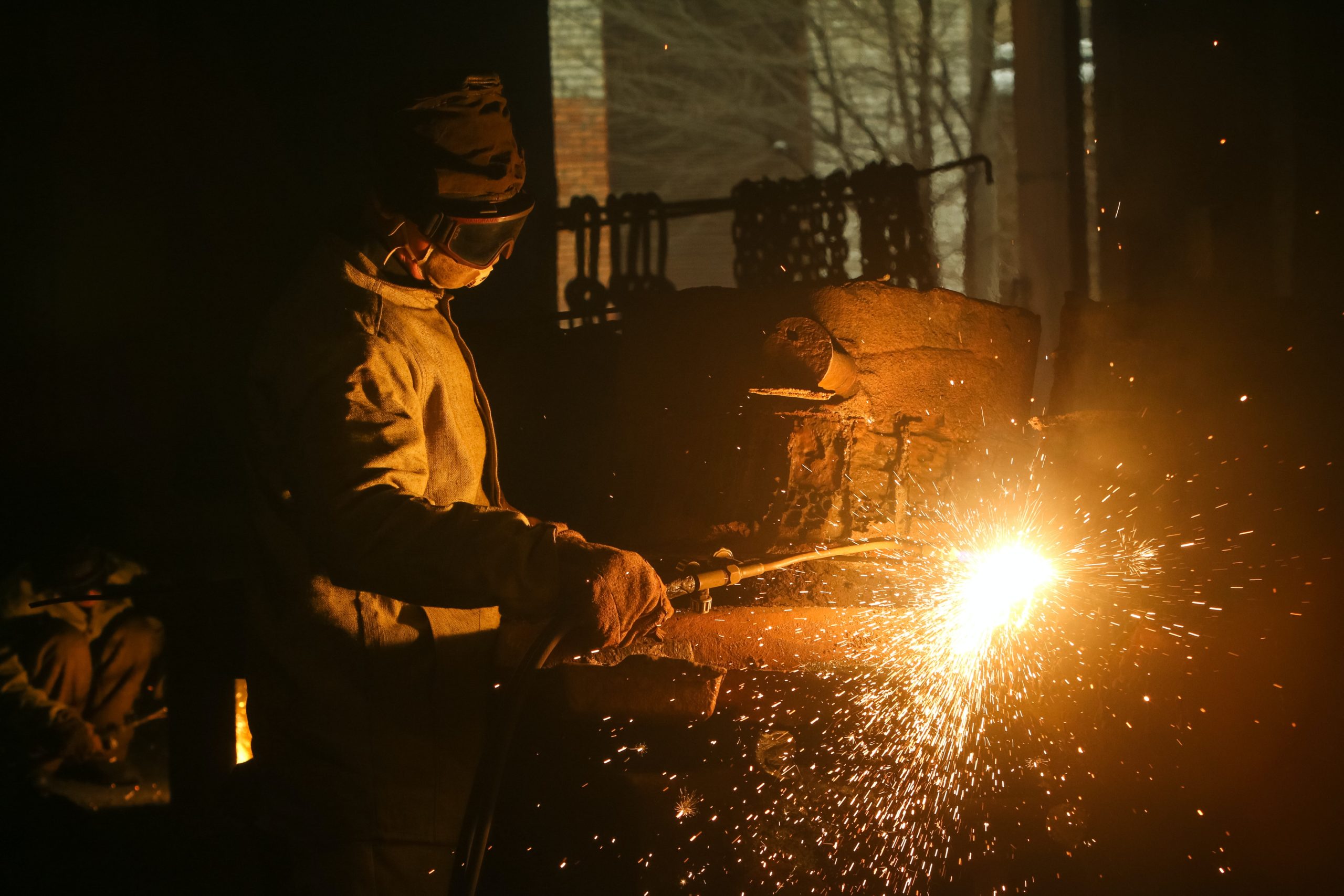Girth weld coatings are the best way to protect from internal pipeline corrosion. The circular weld liner is a liquid protective layer that is used in place of two-pipe steel that is attached near its perimeter during pipe construction. However, there are a few things to consider in this regard, including natural characteristics and ease of use. These processes are used to make rotary welds in underground systems and pipe networks. It is used to make welds around pipes in pipes and underground systems.
Always choose the best pipeline services that help you form corrosion prevention, in Girth Weld coating epoxy pipeline coating is the best option.
Why is Girth Weld Coatings Used?
They are used to make rotary welds for pipes and underground systems. So, Girth Weld coatings are used in the plumbing industry for the following activities:
- Welding on the main line
- Connection welding
- Adjust Weld
- Manufacturing welding
Feature Of Girth Weld Coatings
- Cost-effective
- It should be immersed in fresh and salt water.
- Reduced repair issues
- It works well to speed up production.
- Additionally, suitable for destructive areas.
- Resistance to too many solvents and chemicals
- Resistance to catholic separation
Girth Welding Processes
The circular welding process is also required for welding seams and main welding. Compared to other welding systems, circumferential welding is more difficult not only due to the advanced technology required to weld the pipes, but also the negative environmental factors that can prevent welding. Several methods are used to heat the circumference.
Types Of Girth Weld Coating

- Epoxy
- Polyurethane
- Epoxy coating
- Polyurethane coating
- Corrosion Prevention
1. Epoxy
Epoxy is a type of resin that is made from the polymerization of epoxies. However, this is widely utilised in a range of sectors for a variety of purposes, including metallic coatings, adhesives, tapes, and composite materials like carbon fibre. The remarkable physical, mechanical, and chemical qualities of epoxies, such as heat and chemical resistance, strong bond strength, and durability, have led to their widespread industrial usage.
Epoxy work
Epoxy resin is a type of thermosetting compound made up of various chemicals that work together to form a bond that causes them to stick together. Furthermore, two-component epoxy is an epoxy compound and a hardener that come together to form a single solution.
Pros
- Chemical resistance.
- Appealing surface.
- A safe working environment.
- Quick application.
- Easy to clean.
Cons
- Temporary flooring solution.
- Cracks and chips in high-impact areas
- Slightly damp when wet.
- Boring installation process.
- Complex deletion process.
- Expensive care.
2. Epoxy Coating
Secondly, epoxy coating comes. This is a coating compound that combines two different components: epoxy resin and polyamine hardener (also called catalyst). When mixed, resin and hardener participate in chemical reactions that cause nutrients to form as they cure. Once the epoxy coating is fully cured, the resulting product becomes a durable, long-lasting plastic with many desirable mechanical properties.
Epoxy coatings work
When cured, the pores of the epoxy chemically bond to the floor and form a strong, protective layer. In addition to bonding to the subgrade, the adhesive creates a strong surface that sheds scratches, oil, wear from traffic, and traps hot tires.
Pros
- First of all, self-leveling, high gloss
- Improved air outlet
- Excellent color intensity
- Improved impact capacity
- Improved facial appearance
- Pre-development of buildings and operations
Cons
- Long-term treatment
- When wet, it becomes smooth
- Economical flooring options
- Resistance to injury
- Resistance to the elements
3. Polyurethane
Polyurethanes are varied, modern, and safe. They’re employes in a wide range of applications to make consumer and industrial items. As a result, our lives make easier, more comfortable, and more ecologically responsible.
Polyurethane comes in a variety of shapes and sizes, each with its own look and feel. And they can find in a wide range of products, including adhesives and adhesive clothing, shoe bottoms, mattresses, and foams.
Polyurethane work
Polyurethane is widely considered one of the most durable yet easiest to use wood preservatives. However, Polyurethanes can find in both oil-based and water-based compositions. And therefore it has no variation in performance and application.
Pros
- Firstmost, the advantage is the broad range of resilience.
- Structures that connect solidly.
- Working in difficult circumstances.
- Resistance to fungi, fungi, and mild fungi.
- A variety of colors.
- At last, the production is economic.
Cons
- Low temperatures.
- Bad weather.
- Many solvents attack it.
4. Polyurethane Coating
Polyurethane paint, often known as PU paint or PU coating, is a strong, long-lasting glue that utilizes in industrial and structural composite systems. So, it is widely utilised in the marine sector for a variety of purposes, including coatings, soft foam and varnish, and foam. This results in equipment that can break, get scratches, or stretches and still retain its integrity.
Polyurethane Coating work
Let’s see how polyurethane coating work. Polyurethane coatings provide self-protection. Additionally, high wear resistance on a wide range of materials, allowing longer life and improved appearance. Moreover, when laying the wood, polyurethane allows the wood to retain its appearance while protecting it from the elements.
Pros
- Excellent corrosion resistance. Furthermore, it is not resistant to oil, acids, chemicals, and industrial waste.
- Coating of epoxy is inferior to anti-aging coating. Moreover, it uses as priming or a topcoat.
- Polyurethane resin blends with a wide range of resins, and the mixing formula tailors. As a result, you’ll get fit a variety of application needs.
- Plumbing products made of polyurethane, in conclusion, have a long service life.
Cons
- Polyurethane Has poor storage stability and moisture should separate to prevent flow.
- The price of polyurethane adhesive is relatively high.
5. Corrosion Prevention
Above all, Corrosion Prevention and Control (CPC) integrates system functionality to prevent or reduce corrosion. Moreover, material selection and non-destructive testing for rust, coatings, and cakes; cleaning and washing materials; repairs and other repair tasks.
Corrosion Prevention work
Corrosion prevention refers to industrial solutions to prevent the deterioration of the physical, mechanical, and chemical properties of the substance most commonly caused by corrosion. Furthermore, rust prevention uses in the industry to maintain material safety, reliability, and efficiency. As a result, you’ll get reliable and long-lasting pipeline systems.
Pros
- Firstly, preventing the quality of rust can extend the life of your equipment by up to 250%.
- Rust protection can reduce repair costs due to corrosion damage.
- Thirdly, safety equipment can prevent service interruptions and malfunctions.
- Preventing corrosion can save lives from damage caused by modified tools and equipment.
Cons
- The price of polyurethane adhesive is relatively high.
Conclusion
The Girth Weld Coatings are liquid protective layers that use in place of two-pipe steel that attaches near its perimeter during pipe construction. Moreover, these fabrics are designed to prevent corrosion and are usually produced in epoxy or polyurethane foam. Another common problem in industrial systems is rust or other destructive waste. As a result, get materials that are robust enough to help in the equipment are frequently prone to wear over time.
However, a major reason for covering welding electrodes is to keep them from reacting with the environment. Furthermore, this is important because heating requires very high temperatures, which can cause the metal to react with oxygen in the air, causing many different problems.





